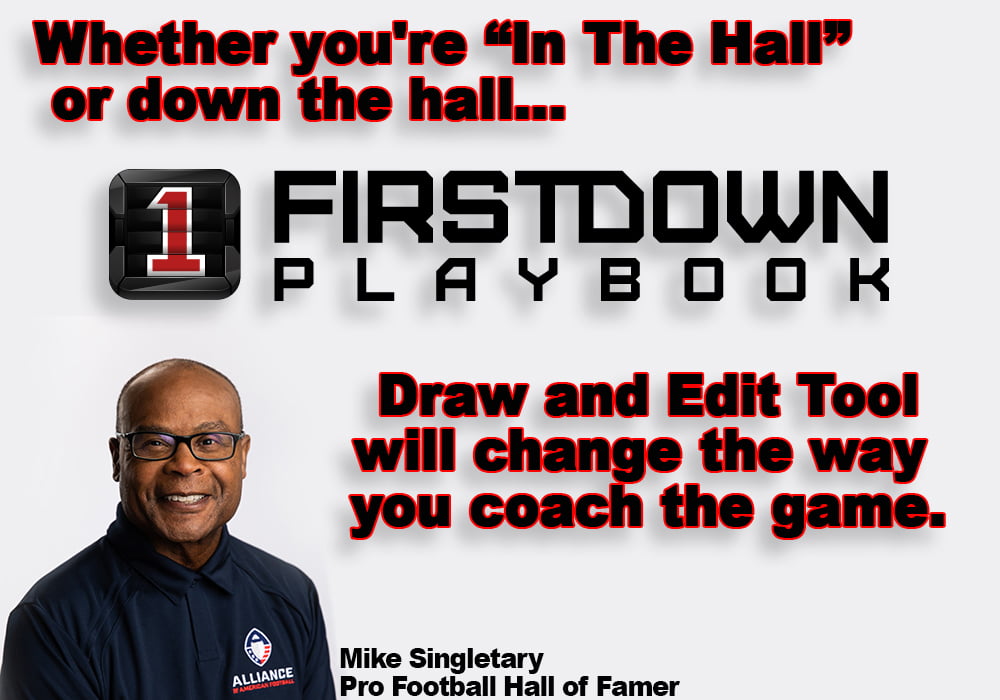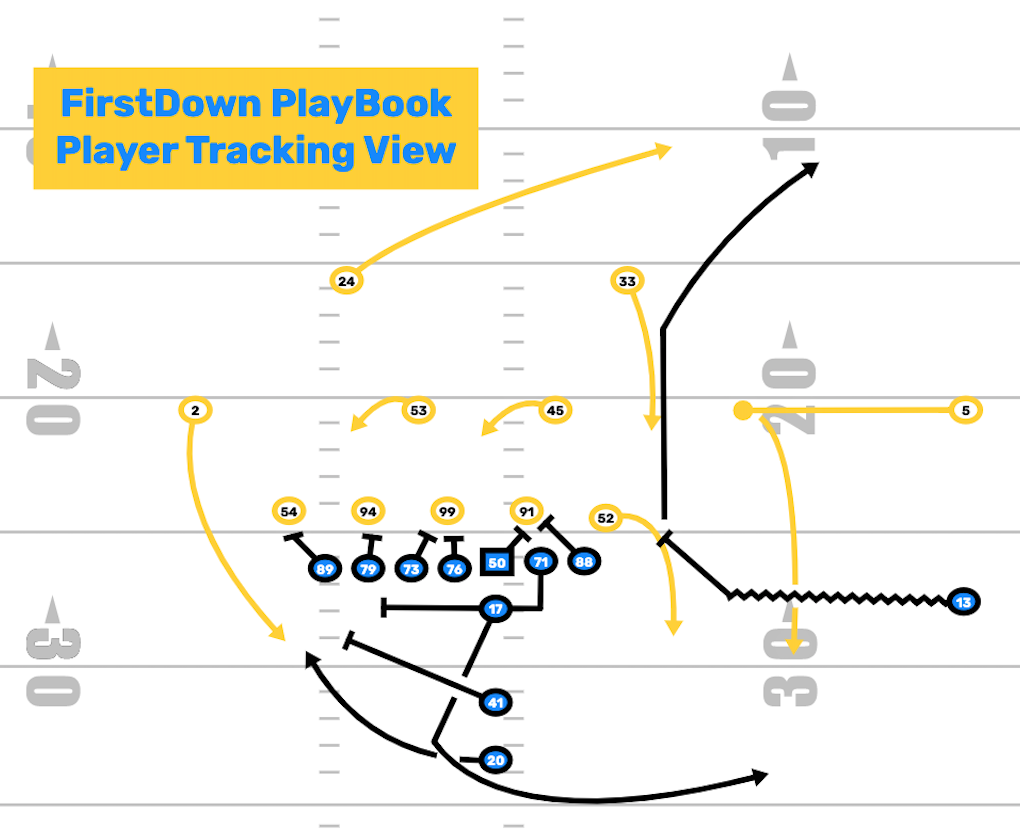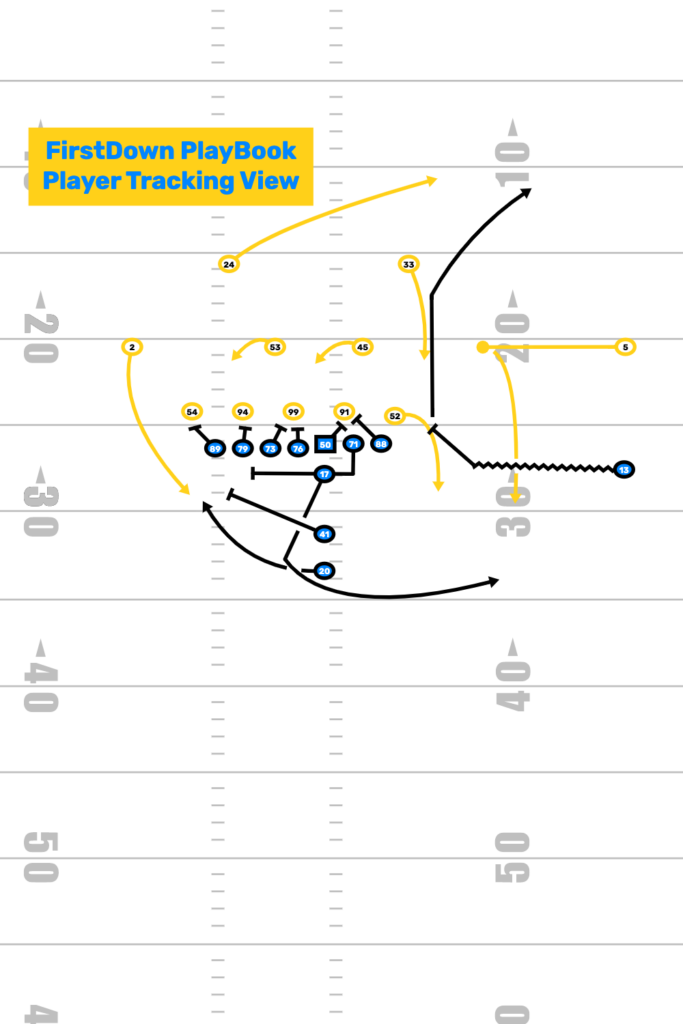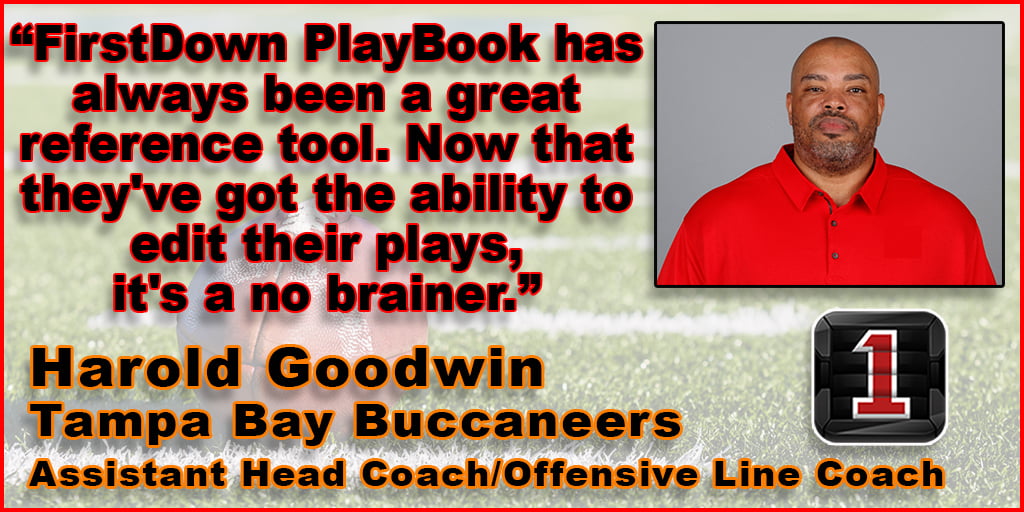FirstDown PlayBook Player Tracking View

In case you have not noticed it FirstDown PlayBook takes play and playbook drawing very seriously. The reasons are many, but right up there are the facts that we made our way into the NFL as a quality control playbook drawer. Another big reason is that we learned the importance of the play design and playbooks in the NFL. This has led us down a road of perfecting it as much as we can. That’s why today we want to look at FirstDown PlayBook player tracking.
We have taken the first touchdown scored this year in the NFL as our example. The Buffalo Bills executed this unbalanced bootleg pass on Thursday to perfection. We highlighted it on Sunday here on the Coaches Community site. This is part of our All 22 Tuesday feature that we provide for you each week during the season.
Today we want to highlight how there are several different ways that play drawings are used in football. There are more ways than this to be sure but we want to focus on what a fan wants to see, what coach wants to use to teach and what an analytics expert must see.
1. The Fan View

This is the view that you are going to see on social media and the media in general, if they attempt to draw the play up at all. It’s usually easier just to steal the video from somewhere and write about it. There is normally very little detail involved when only video is used. When an actual play drawing is used, it demands accountability just because the play has to be re-constructed.
Even then, it is often hard to capture all of the exact details of the play. Why? Well, there is a lot going on when you draw in all of the lines. Also the players are very small when you try to capture them on the entire field space they use for any certain play. So what happens is the drawer makes the players bigger so the reader can see the player and assignments.
More All 22: Bucs Pick 6 Comes From Cover 3 Secondary
FirstDown PlayBook is no exception to this. We know that a lot of our readers and followers are not coaches. Even if they are, they want to see what happened on the play. They are not concerned about landmarks and if the player was on the top or bottom of the numbers. If you are a coach who is installing a play or running it off a scout team card in practice, this is a whole different story though.
2. The Coach View

If you ever want to see a good college or NFL offensive coordinator go ballistic, let the target receiver line up with an incorrect split. These coaches understand that the timing of any play starts with lining up exactly where you are supposed to. This affects the defensive coaches too. The defensive coaches and good players spend hours and hours of video study to learn tendencies based on where the offense lines up.
It is critical that the scout team or the “look” team simulates that week’s opponent as closely as possible. A good scout team card is drawn with players in the exact spot that they were on video study. Often times a scout team card will have notes reminding the scout team coach and players about this. For this type of drawing the players should be scaled down to fit the proportions of the field.
Related: Are You Using The Coaching Notes Templates?
Notice in our second drawing how the offensive line and tight ends fit between the hashes differently than our fan view drawing. This allows us to draw the players in the exact spots and offer an exact rendering of what they play should look like. Note that the coaches normally won’t draw in the reaction of the defense for a playbook drawing like we have here.
3. The Analytics View
This is the one we really want to point out today. It is relatively new when you think about the fact that our game has been around for over one hundred years. Over the last twenty years or so the analytics of the game has increased. People and coaches have become more interested in making decisions based on the data as opposed to their gut.

Generally speaking this is smart. Analytics is a big word though. When a coach asks an analytics expert how many times a play was run against a specific defense and what were the results, the analytics is pretty straight forward. The expert will crunch the numbers and spit them back at the coach.
Ask that same expert how and why the data came back like this and the sound of crickets will be deafening. Here’s why. The data analytics folks have been spewing data and even tracking players for two decades now. The problem is that all of the player tracking in the world is useless if you don’t understand what the player(s) were supposed to be doing.
This is why the FirstDown Player tracking view matters. You are going to see it show up in some interesting places over the next few years. Places that not only help coaches and their analytics staff, but also the fan who wants to call plays as they watch a football game. Stay tuned. This is going to be fun.
